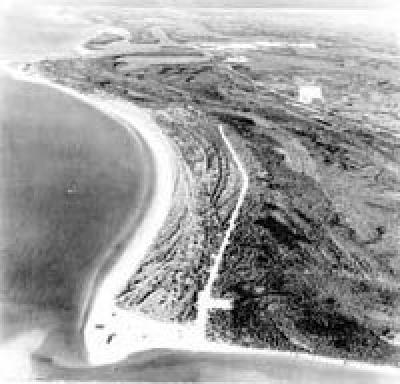Old Marco Island
Before the splendor of the modern era, Marco Island was the domain of the fierce Calusa Indians and hardy pioneers. It is believed that the Calusa moved to Florida at least 4000 years ago. When Christopher Columbus set sail to explore the new world, the Calusa were flourishing along the lower Gulf coast; rich land and sea resources provided the Calusa with a plentiful food supply and raw materials for tools, shelter, and clothing.
The Calusa were expert woodworkers who carved hollowed-out canoes, beams and planks for their houses, docks, and piers. Archeological finds on Marco Island revealed fine hand-carved works -- masks, animals, and even gods. The most famous discovery, a six-inch wooden panther-like figure, named Key Marco Cat, is now housed in the Smithsonian Institution.
Some of Spains most celebrated navigators and conquistadors were eager to tackle the virgin shores of La Florida in the 1500s. A companion of Columbus, Juan Ponce de Leon, led the first European exploration of Florida from Puerto Rico in 1513. After rounding the Florida Keys and in search of fresh water, he is said to have made landfall on or near Caxambas at the southern end of Marco Island where the present-day Estates area is located. Two artesian springs were located near what is now known as Caxambas Pass. The Calusa lived in the hills at Caxambas high atop mounds made of discarded shells and in huts over the water at present day Old Marco Village, about five miles to the north. Shell mounds would later be discovered toward the southern end of the island.
The Spaniards are credited with naming the island and its inhabitants. "Caxymbas" was noted on maps. The name Caxambas -- Indian for fresh water -- is one of the oldest place names in North America. The island became known as La Isla de San Marco and over the years became known as San Marco Island and eventually Marco Island.
The early inhabitants were likely descendants of the Mayans. The Calusa were a tall, handsome people and were known for their fierce and warlike nature. Relations between the Spaniards and the Calusa were seldom friendly. Explorers were often ambushed the instant they waded ashore. In 1521 Ponce de Leon was fatally wounded by a Calusa spear. He died a few days later in Cuba.
The Calusa were skilled hunters with both the spear and the bow and arrow. While they depended mainly on hunting, fishing, and food gathering, they are believed to have grown some crops. Spanish diaries indicated that the Calusa feasts usually consisted of "very good fish and oysters without anything else." Due to the diseases spread by the Spanish explorers and the slave hunters from Europe, the Calusa were annihilated by the mid 1700s. Seminole Indians later took the place of the Calusa Indians and lived in the region.
The island and Southwest Florida were nearly uninhabited until after the Civil War. Hardy pioneers, willing to live on the raw mosquito-infested mangrove swamp settled the island and fished, hunted, and shipped surplus crops to Key West. While well-cultivated plantations were observed in 1824.
William Thomas (W.T.) Collier is credited with the founding of Marco Island when he arrived at the north end of the island in 1870, presently Old Marco Village. However, his second son, Captain Bill, would prove to be the hardiest of all pioneers and one of the island’s most famous entrepreneurs. The Barfield family, James and his wife Tommie, would become equally spotlighted in the island history while building their lives in Caxambas, just five miles to the south.
The Colliers shaped years of development, growth, and prosperity at the north end of the island. J. H. Doxsee opened a clam cannery in 1911 and employed as many as 150 people.
Captain Bill’s greatest legacy is the lasting transformation of a sprawling homesite into today’s Olde Marco Inn. It was officially opened in 1896 and remains an attractive hotel and restaurant to this day.
By the early 1920s, Barron Gift Collier (no relation to W.T.) would arrive on the scene and purchase over one million acres of Southwest Florida real estate, including ninety percent of the island, which he and his heirs planned to develop.


Parks & Recreation Facebook MIPD Facebook
Fire Rescue Twitter
Parks & Recreation Twitter
Marco Island Police Twitter